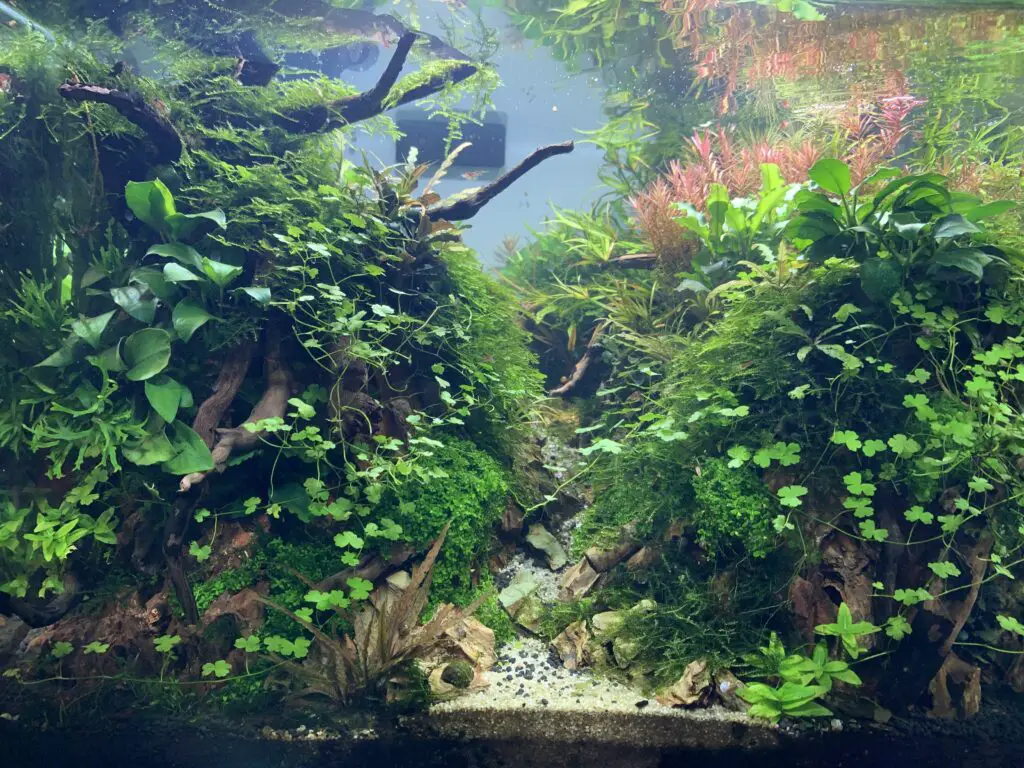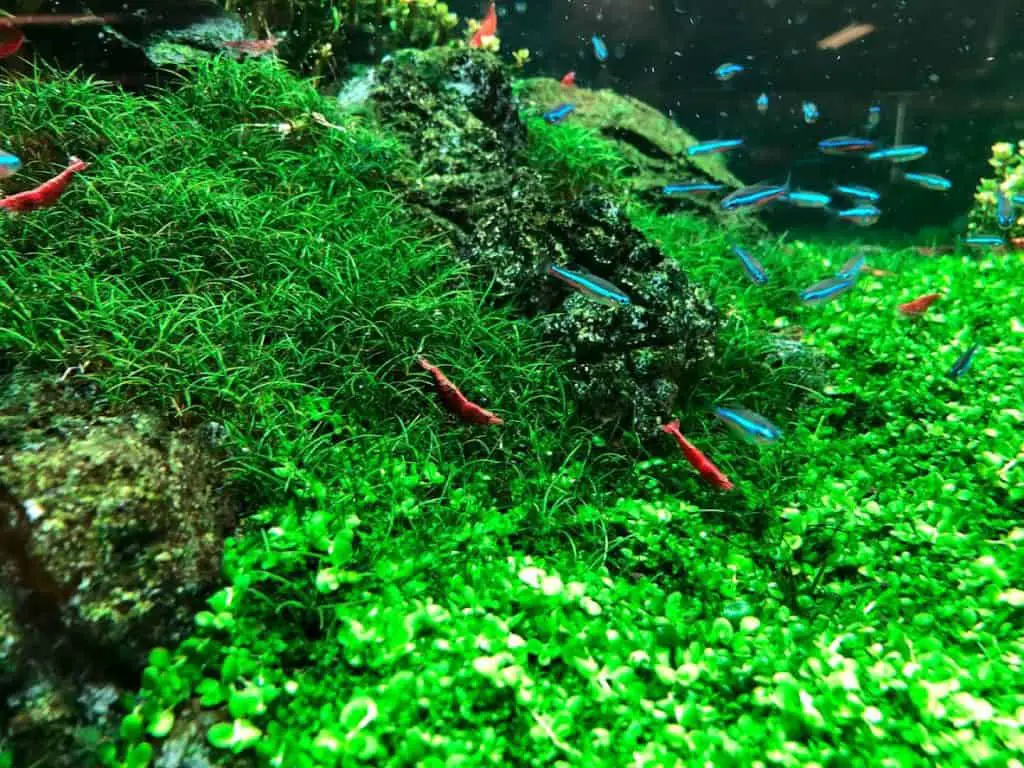Are you ready to delve into the world of aquascaping? Creating a stunning underwater landscape in your aquarium may seem daunting, but you can achieve your dream aquascape with the right guidance.
This article will provide all the essential tips, equipment, and maintenance techniques you need to create and maintain a beautiful aquascape that will leave you and your guests in awe.
Before you jump into aquascaping, it’s important to understand the basics. You’ll need to plan your layout, choose the right equipment, and maintain your aquascape regularly to ensure longevity. But don’t worry; we’ve got you covered.
By the end of this article, you’ll have a comprehensive understanding of all the necessary steps to create a breathtaking underwater world. So, let’s dive in and explore the fascinating world of aquascaping together!
Key Takeaways
- Aquascaping can be intimidating, but getting started with medium-sized aquariums is easy.
- Planning is crucial for aquascaping, considering aquarium size, type of setup, style, layout, and compatible species.
- Equipment needed for aquascaping includes an aquarium, lighting, Co2 set (for high-tech setups), nutrients/fertilizer, aquarium test kit, filter, heater, substrate, plants, and hardscape.
- Aquascapes’ Maintenance includes regular water changes, filter cleaning, gravel vacuuming, glass cleaning, nutrient dosing, testing, and pruning.

Getting Started
If you’re new to aquascaping, don’t worry – getting started is easy. You can begin with a medium-sized aquarium, which will be easier to maintain than larger ones. However, it’s important to plan ahead and consider your aquarium’s size, setup, type, layout, and stocking.
When it comes to the type of aquascape you want to create, there are several styles to choose from. Iwagumi is a minimalist style that features a few carefully placed rocks, while Dutch aquascapes are known for their lush plant growth. Taiwanese aquascapes are a combination of both, with a focus on creating a natural and balanced environment.
Take some time to research different styles and find one that appeals to you.
Equipment Needed
To start setting up your aquascape, you’ll need various items, including an aquarium, lighting, substrate, plants, hardscape, and a filter to keep everything clean and healthy. Here are some things to consider when choosing the best equipment for your aquascape:
- Lighting: The lighting you choose will depend on the plants you want to grow. LED lights are popular for their energy efficiency and customizable spectrum options.
- Filters: Canister filters are popular for keeping equipment out of the aquarium and providing efficient mechanical, biological, and chemical filtration. Hang-on-back filters are also a popular option for their ease of use.
- Substrate: The right substrate will depend on the type of plants you want to grow. Some popular options include nutrient-rich substrates, sand, and gravel.
- DIY vs. pre-built setups: DIY setups can be more cost-effective, but pre-built setups can be easier for beginners. Consider your experience level and budget before making a decision.
Choosing the right aquascaping equipment can make all the difference in the success of your aquascape. Take the time to research and consider your options before making any purchases.
Maintenance Tips
Regular maintenance is crucial for ensuring the health and beauty of your aquascape. One key aspect of maintenance is pruning techniques. As plants grow, they can become overgrown and take over the tank, leading to an unbalanced and unsightly appearance.
To prevent this, it’s important to prune regularly and remove any dead or dying plant matter. This can be done using scissors or other pruning tools and should be done carefully to avoid damaging the plant or disturbing the substrate.
Another important aspect of maintenance is algae prevention. Algae can quickly take over an aquascape, creating a murky and unattractive appearance. It’s important to maintain proper lighting, nutrient levels, and water parameters to prevent algae growth.
Also, algae can be manually removed using a scraper or brush or adding algae-eating fish or invertebrates to the tank. By staying on top of maintenance and preventing algae growth, you can ensure that your aquascape remains healthy and beautiful for years.

Conclusion
Congratulations! You’ve successfully completed your journey toward becoming an aquascaping expert. With the tips, equipment, and maintenance techniques discussed in this article, you can create a beautiful underwater world in your aquarium.
Remember to plan your layout carefully and choose the right equipment, such as lighting, filters, and substrate, to ensure the health and beauty of your aquatic plants and fish.
Regular maintenance, including water changes and pruning, is crucial to maintaining a thriving aquascape.
Enjoy the process of creating and maintaining your aquascape, and don’t hesitate to experiment and try new things. With time and practice, you may become a master aquascaper, inspiring others to take up this rewarding hobby.
Happy aquascaping!


